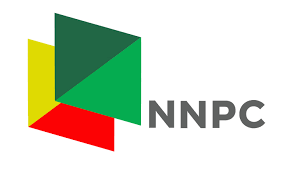Barely two days after increasing the pump price of Premium Motor Spirit (PMS), the Nigerian National Petroleum Company Limited (NNPC Ltd.) has again slashed the price at its retail stations, bringing it down to N900 per litre from the previous N955.
The price adjustment, confirmed on Wednesday, was observed at several NNPC retail outlets across Abuja, including the one along the Kubwa expressway. Station attendants at these outlets confirmed that they had implemented the new directive, reducing the price by N55 just 48 hours after it was hiked.
An attendant at the NNPC station in Kubwa said, “On Tuesday, we sold fuel at N955 per litre, but it is now N900.” The change has come as a surprise to many motorists, given that the increase to N955 per litre only took effect on Monday, August 5, 2025.
The earlier increase had seen fuel sold at N955 per litre in Abuja and N915 in Lagos, up from the previous N865 per litre. NNPC had cited rising ex-depot prices and market volatility as the reasons for the increase. However, Wednesday’s price drop suggests a rapid shift in market conditions, which industry observers say points to the unstable nature of Nigeria’s deregulated downstream sector.
Independent marketers have also begun adjusting their prices, although not as sharply. In Gwarinpa, Abuja, Ranoil and Empire Energy stations were selling petrol at N955 and N950 per litre respectively, down slightly from N971 and N970 earlier in the week. This shows a marginal drop, but prices are still well above NNPC’s new rate.
Meanwhile, some filling stations are yet to make any adjustments. An MRS station manager in Abuja disclosed that they are still dispensing petrol at N885 per litre, the same price they sold earlier in the week. “There has been no new instruction to adjust our rates. We are monitoring the market,” he said.
The situation reflects the broader pricing disparity and unpredictability in Nigeria’s fuel market. Following the removal of fuel subsidy in mid-2023, pump prices have been determined by market forces, including the cost of fuel at depots, transportation, and forex rates.
According to stakeholders, the fluctuation in depot prices, particularly from Dangote Refinery and private depot owners, is the main driver behind the constant pump price changes. Ex-depot prices — the cost at which petrol is sold by depots to marketers — remain highly volatile, often changing within days.
Petroleumprice.ng, a pricing analytics platform, reported on Wednesday that some depots had slightly reduced their ex-depot prices. For instance, Zone 4 and Mainland depots dropped their rates by N2 per litre, from previous highs, bringing their current prices to N860 and N862 per litre. This accounts for a minor decline of about 0.23 per cent.
Other depots, such as MENJ, Aiteo, Sahara, MRS Tincan, A.A. Rano, and Pinnacle, maintained steady prices, with rates ranging between N860 and N861 per litre. Despite these slight reductions, market experts warn that such narrow changes do little to stabilise retail prices due to additional costs like transportation, margins, and operational expenses.
The current pricing model has raised concerns among fuel consumers, transporters, and other market players, who have repeatedly called on the Nigerian Midstream and Downstream Petroleum Regulatory Authority (NMDPRA) to strengthen its oversight and ensure fair pricing practices across the value chain.
Industry analysts have urged for clearer pricing guidelines, transparency in depot transactions, and better regulation to prevent excessive pricing and profiteering. Many also want the government to provide timely information on price fluctuations and market interventions to avoid panic buying and hoarding.
The NNPC’s decision to cut prices less than 48 hours after an increase has reignited debates about the sustainability of the current pricing framework and the overall stability of Nigeria’s fuel supply system. As the local market continues to adjust to the realities of a deregulated regime, petrol pricing is expected to remain volatile, driven by changing depot rates, forex scarcity, and broader economic conditions.
